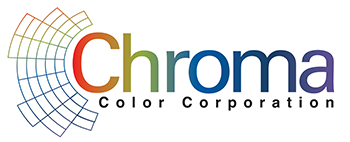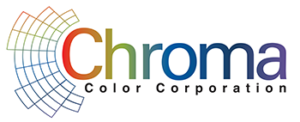Color is a critical feature in consumer packaging that enables brands to create differentiation and recognizable identity on shelf. Major brands and their packaging supply partners are rethinking their colorant strategy.
How do you find the right value-added color supplier? Most color suppliers have a fixed portfolio of either liquid colorants or traditional pellet colorants, thereby leaving processors confused about choosing the best colorant technology to accomplish their goals.
Both technologies have advantages and disadvantages. Below, is a quick overview of both liquid and traditional pellet options followed by two case studies in which color-processing challenges were overcome using a new pelletized color technology solution.
Liquid vs. Pellet:
Liquid Colorant for manufacturing plastic products:
Advantages:
- Effective at extremely low use rates.
- Good for tints
- Good Color distribution
- One less heat history than pellet concentrates
- Coloring costs may be lower than conventional pellet color
Challenges:
- Specialized pumps are required
- Several pigment and additive limitations.
- Screw slippage may occur at high use rates
- Limited application with engineered polymers
- Not suitable for extrusion blow molding of HDPE bottles
- Production interruptions caused by container changeover.
- Increased housekeeping issues related to spill cleanup and storage of dedicated hoses.
- Limited shelf life due to product separation that ends up increasing costs and wasted color.
- Issues with sustainability due to wasted/residual product and packaging which often requires landfill disposal.
Pellet Colorant for manufacturing plastic parts and products:
Advantages
- Pellets are easy to handle
- Application through readily available volumetric and gravimetric feeding systems
- Excellent dispersion
- Reduced housekeeping and maintenance
Challenges
- Conventional pelletized colorants are more costly than liquid colorant due to high let down ratios.
Ideally, a winning program requires a colorant format that provides ALL the Benefits and without ALL the Challenges…
Attached are two case studies illustrating how the patented Chroma Color® G-series pelletized colorant technology resolved challenges faced by major brand owners and their plastics processors with conventional pelletized colorants and liquid colorants.
CASE STUDY #1
Mock up empty container bottles for cosmetic cream, isolated on white background with clipping path.
Overcoming Processing Limitations of Pearlescent Liquid Colorant
Liquid color can be very complex and typically requires extra care during processing to ensure that specified color appearance is achieved.
A case in point is the use of pearlescent liquid colorants for a large commercial brand’s package. Although the liquid colorant initially met the basic aesthetics and manufacturing needs, continual processing challenges persisted with high scrap rates and inconsistencies.
Specifically, it was determined ingredient separation within the liquid masterbatch was the root cause of the visual inconsistencies. Additionally, the ingredient separation required liquid colorant agitation that frequently interrupted production scheduling. Overall production costs became substantially higher than anticipated (quoted) and production throughput was negatively impacted.
Even with the recent advancements in material handling and liquid feeding systems, liquid colorants remain messy to handle, which adds to both processing labor costs and changes to housekeeping practices. Due to these persistent obstacles, the packaging development team decided to seek an alternative product to achieve the desired pearl color.
The Solution: Chroma Color®’s patented G3 pellet technology
The packaging team immediately benefited from the switch because:
- G3 does not have any shelf life limitations
- G3 reduced flow lines that frequently appeared on components produced using pearlescent liquid colorants
- G3 enabled substantially faster and more cost-effective color changeovers with less purge and reduced downtime
- G3 inventory was fully consumed, with no residual waste.
Chroma Color®’s patented G3 colorant was ultimately selected to replace all the liquid colorants within the final package. Gravimetric pellet color feeders were integrated on the production line, resulting in significant overall cost reductions.
For more information about patented G2 and G3 pellet technology from
Chroma Color® Corporation, visit:
https://chromacolors.com/g2-and-g3/
CASE STUDY #2
Eliminating Instability of Teal Colorant and Inefficient Let-Down Rates
Blank dispenser and bottles of cosmetic products with turquoise lids
The particular Teal color-space is critical for this brand’s identification, yet it faced multiple color related concerns such as inconsistencies amongst the individual components.
The part-to-part inconsistency forced the Processor to consume the current colorant at substantially higher use rates to achieve visual color uniformity. These higher use rates forced production inefficiencies, larger than desired colorant inventories and elevated levels of finished component inventory to ensure required lead times were maintained.
Consequently, the Brand Packaging team and Processor jointly began searching for an alternative colorant to resolve the multiple challenges of color stability, processing difficulties, excessive use rates and overall package cost. During their investigations, we introduced Chroma Color®’s patented G-series colorant technologies. The G-series technology includes both G2 (recipe system) and G3 (manufacturing technology). Molding trials on both technologies were initiated, to identify the most appropriate and beneficial package.
The Solution: Chroma Color®’s patented G2/G3 technology
- G2/G3 system combination provided superior color dispersion eliminating color variation
- G2/G3 combination reduced the use rate from 4% to 1.5% LDR, lowering the overall cost-to-color expense
- G2/G3 system combination provided faster cycle times, more cost-effective color changeovers with less purge and reduced downtime.
Chroma Color®’s patented G2/G3 colorant package was selected to achieve the desired Teal. The lower letdown ratios, along with the processing benefits of the G-series allowed the molder to meet required their production demands. Further, with the lower color requirements, coupled with the gained production efficiencies, provided desperately needed warehouse storage space.
The numerous benefits brought to the program via Chroma Color®’s patented G2/G3 combined technologies eventually led to a complete switch on ALL colorants for this Brand’s needs.
For more information about patented G2 and G3 pellet technology from
Chroma Color® Corporation, visit:
https://chromacolors.com/g2-and-g3/
To download this article: Liquid vs Pellet
Chroma Color® Corporation is a technology-leading supplier of specialty colorants and additive concentrates. Chroma’s extensive technical and manufacturing expertise coupled with its game-changing colorant technologies have surprised and delighted customers for over 50 years in markets such as: packaging, consumer products, wire and cable, building & construction, medical & healthcare, lawn & garden, durable goods, sanitation, recreation & leisure, transportation and more.
References:
1-https://books.google.com/books?id=urctkFROYbkC&pg=PA439&lpg=PA439&dq=liquid+color+vs+pellet&source=bl&ots=luqZQ-mkoB&sig=-uRUrvG7pSfcmfFA12qs4YlfXZQ&hl=en&sa=X&ei=S2Y1VZHHCrGOsQSOl4D4Ag&ved=0CDYQ6AEwBw#v=onepage&q=liquid%20color%20vs%20pellet&f=false
2- https://books.google.com/books?id=9IZSW9BVCyAC&pg=PA297&lpg=PA297&dq=liquid+color+vs+pellet&source=bl&ots=Q63Bdp6GLe&sig=FZA4FTDryATy0QapU6v9sLQzU1o&hl=en&sa=X&ei=S2Y1VZHHCrGOsQSOl4D4Ag&ved=0CDQQ6AEwBg#v=onepage&q=liquid%20color%20vs%20pellet&f=false

